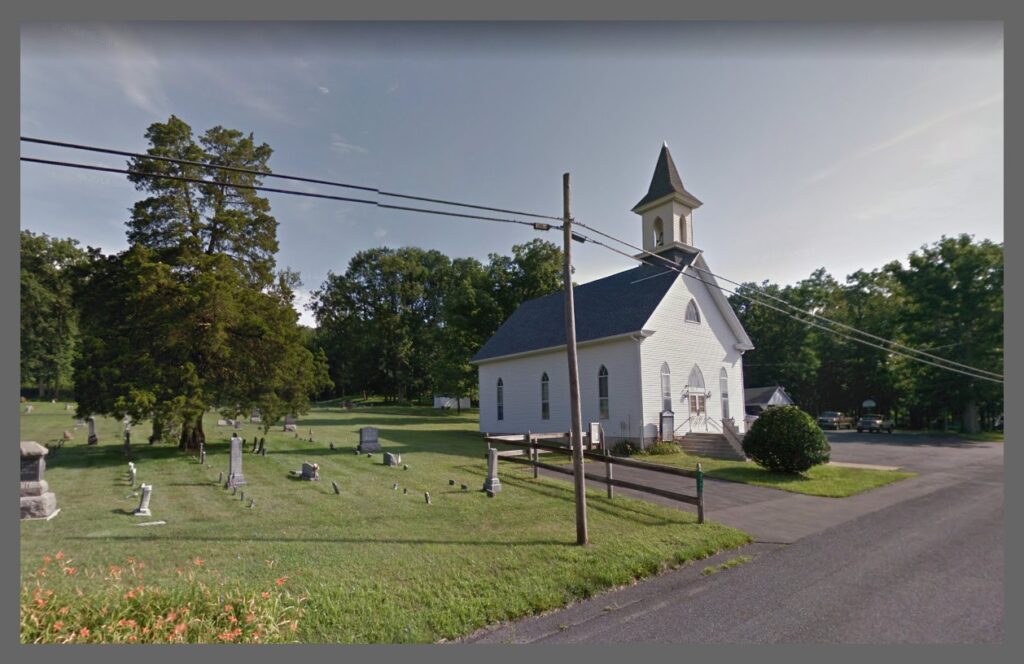
The following history is from the Halifax Area Bicentennial Book, published in 1994:
On April 1, 1857, this congregation was organized by the Rev. N. E. Bressler, who was then pastor of the Armstrong Valley Charge. On the same day, the Lutheran Congregation was organized by the Rev. M. Fensler. The church was named The St. James Lutheran and Reformed Church.
The ground whereon was erected a house of worship was obtained from John Shutt and Phillip Hoffman. In 1859, the first structure was built and it was a log structure. Pews and pulpit were homemade and never painted. The old church building faced south and was located about two hundred feet west from the present church building. The old building was twenty-eight feet wide and thirty-six feet long; the pulpit was high with a long stairway and banisters on bot sides and along the steps.
The Reformed Congregation enjoyed a prosperous membership for many years, while the Lutherans never were strong in membership and in 1893 they abandoned having worship services and released their claim of ownership in the church to the Reformed Congregation.
In 1905, it was decided that a new houses of worship was needed and the following building committee was appointed: Solomon Gottschall, Jacob Bordner, William Potteigher, Joseph Keiffer, and Isaiah Shultz. The cornerstone was laid and the building was dedicated in the year 1905. The Rev. G. W. Spotts was then pastor. A railing surrounded the pulpit. In 1906, a bell was placed in the belfry, and in 1933, a metal ceiling was placed in the sanctuary.
Due to the trend of the people moving to the cities and the community now being largely composed of hunting camps, this congregation is not enjoying the same prosperity as in its early years; but during the pastorate of Rev. George Moyer, this faith group had been very active in beautifying their church. The inside of the church had been renovated and the chancel altered in accordance with the traditional customs of the Reformed Church. A piano, carpeting and shades were purchased, a basement was provided, a furnace was installed and the exterior of the church had been given a new coat of paint.
The area to the left of the church was an ideal place for holding picnics and family gatherings. The congregation erected a pavilion on this spot. The building was equipped with fireplace, tables and a drilled well. At appointed ties the members with hammers and saws assembled and constructed the building. With the mountains as a background, this was a beautiful setting. Many delightful gatherings had been held including an annual Homecoming Festival. This church also has an annual Homecoming Church service the first Sunday in September.
On May 17, 1964, due to the number of churches in the charge and the lack of ministers, a vote was taken to merge. It was suggested St. James affiliate for church services with Enterline. St. James and St. Jacob’s (Miller’s) chose to remain as they are. These two churches are known as Armstrong Valley Charge, while the remaining three, St. Paul, St. Peter’s and Trinity, are known as Twin Valley Charge.
Through mergers with other denominations, the Reformed Church is now known as United Church of Christ.
St. James and Jacob’s Church had Miss Irene Reiber as their supply pastor.
________________________________________________
Corrections and additional information should be added as comments to this post.